
Many aviation-related objects lend themselves well to model super-detailing. Amongst such items, guns have become an increasingly common favourite as after-market and scratch-building enthusiasts increasingly display cowlings and other removable panels in the open position. With such in mind, we would like to begin a new series dealing with the aviation armament of VVS aircraft from the 1917-50 period.
The ShKAS
Designed by the Shiptal'niy Bereau during the early 1930s under the major guidance of Senior Engineer Komaritskiy, the ShKAS (Shiptal'niy Komaritskiy Aviatsionniy Skorostrelniy) KM-35 first appeared in evaluation for during the last part of 1932. The design specification was exceedingly challenging, and a minimum rate-of-fire of 1500 rounds/min. was specified by the Government for the project. Furthermore, the new gun was to make use of the standard Army rifle cartridge, the 7.62 x 54 mm rimmed round. The weapon was to be belt fed primarily, but much time and effort were wasted early on in attempting to make the weapon compatible with a 75-round magazine (which was abandoned in course) for defensive operation.
The early examples of the KM-35 suffered from protracted teething troubles. This was to be expected, one must add, given the parameters of function required for such a gun. A major advance was realised when a special type of 7.62 x 54 mm ammunition was developed for the ShKAS, this featuring more propellant for the round, inducing higher breach pressures. The new round did much to help the function of the weapon, and by 1935 the ShKAS was reliably firing at a rate of 1800 rounds/min. with minimal stoppages. The special ShKAS rounds were marked on the base to identify them, and one suspects strongly that foreign operators of the KM-35 who experienced continuous reliability problems with the gun were likely unaware of the differences in ammunition, and employed Army ammunition in their ShKAS weapons [the German Captured Weapons Handbook for 1943, for example, despite the great detail present in describing the markings of the rounds and their size, mentions these identity marks on the base not at all]. It was said, as well, that Soviet snipers often carried a few ShKAS rounds with them for use against "priority" targets, an act which would have been very hazardous indeed with the risk that their Mosin rifles might have exploded in their face when firing such ammunition.
7.62 mm ShKAS Cartridges
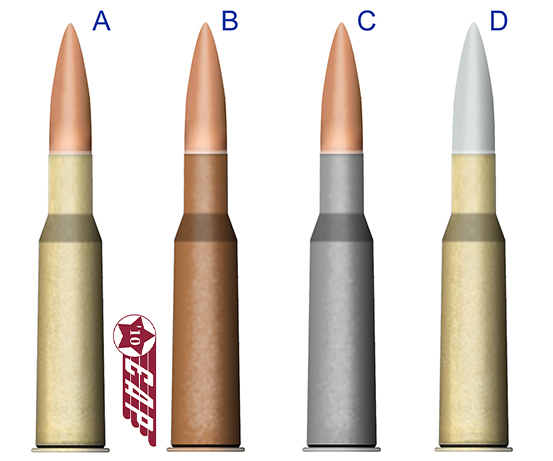
A. Standard ball ammunition with copper-jacket round and brass wash for casing
B. The appearance of a standard round after exposure to the elements, patina seen on the casing
C. Ball ammunition type with an non-brassed steel case
D. Ball ammunition type with a soft steel jacket round
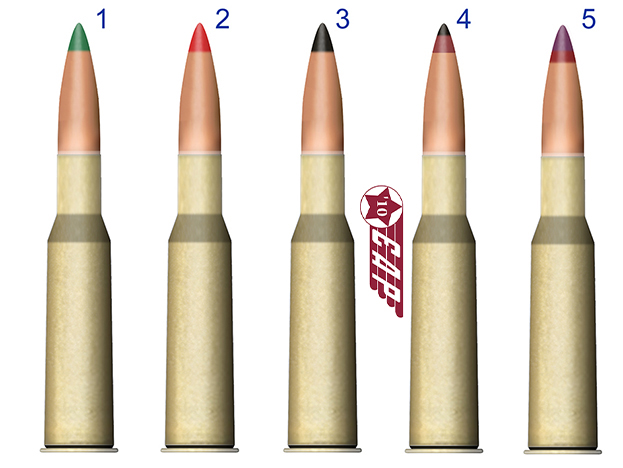
B. The appearance of a standard round after exposure to the elements, patina seen on the casing
C. Ball ammunition type with an non-brassed steel case
D. Ball ammunition type with a soft steel jacket round

2. ZP exploding round ammunition
3. Original Armour-Piercing (AP) ammunition
4. Armour-Piercing Incendiary (API) ammunition
5. Armour-Piercing Incendiary Tracer (APIT) ammunition
It was usually the case that steel jacketed rounds also featured the appropriately coloured tip for identification purposes (copper shown above).
An outstanding web page relating to 7.62x54mm ammunition may be found at this link.
The KM-35 ShKAS Gun
Both a fixed and a hand-operated defensive version of the ShKAS were developed from the outset. The modifications to the fixed variant were quite minimal, with the charging handle replaced by a rod connecting to the bolt, a cable mounted to replace the firing trigger, and the various furniture removed. No other fundamental differences existed between the models, and such could be converted in the field using the appropriate pieces from the other type(s).
Not surprisingly for a weapon with such a prodigious rate-of-fire, it was the hand-operated defensive version of the KM-35 which was first introduced into regular (but not experimental) VVS service. The defensive ShKAS was usually mounted in some type of turret, such as the dorsal TUR-9 in the SB. Various types of sighting devices were attached to the front of the ShKAS when mounted in this way, but units corrected for traverse and deflection were common. However, despite any differences in the sights and mount, there were no modifications to the basic gun nor its built-in fittings.
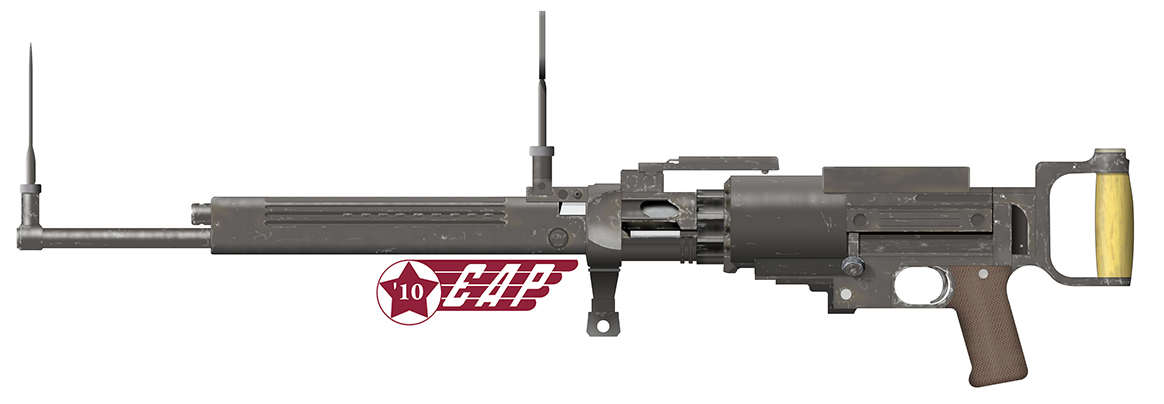
ShKAS with basic ring-and-bead type sights
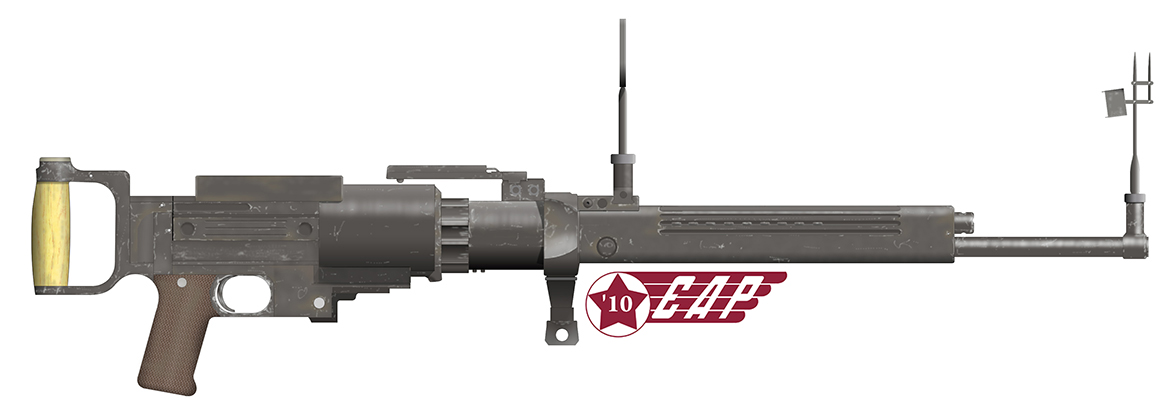
ShKAS with deflection-correction type forward sight
A special dual-mounting turret apparatus was developed for the nose position of the SB, the exact nomenclature of which I am still uncertain. This unit was seen later in aircraft such as the TB-7, and in modified form in several other types. The basic unit seems to have been delivered in an un-painted condition, but when finished was likely seen in IMP, or such similar colours.
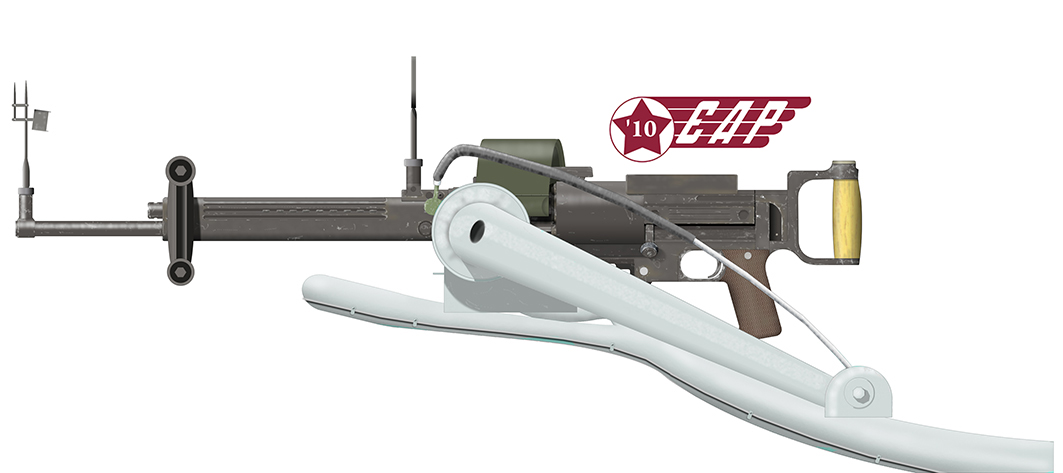
Twin-mounted ShKAS as seen in the SB's nose position; note the heavy brace mounted forward to connect the weapons
The fixed ShKAS gun was seen in both synchronised and non-synchronised formats, but these were not in either case modified functionally compared to the basic defensive weapon. The front of the barrel in the fixed versions did not feature the mounting attachment 'collar' of the defensive guns, and the aft sighting apparatus was simply not fitted. With the furniture removed, firing was completed by means of a cable attached to the trigger, whilst the weapon could be manually cocked using a rod attached inside the receiver to the charging handle.

The synchronisation mechanism was a simple mechanically operated device which fit over the forward portion of the chamber. When engaged, a pivoting 'arm' merely fit inside the cut-out at the aft end of the gas cylinder where the gas rod met the forward extension of the bolt, and thereby prevented the latter from moving forward. The system was similar in concept to that fitted to the heavier Beresin guns, but not so 'tubular' in appearance. Also of interest, the German Captured Weapons Handbook for 1943 describes versions of synchronised ShKAS guns with extended barrels of various lengths; it is not now clear if such were service versions of the KM-35 (which are not shown in Soviet documents) or experimental types of ShKAS (indeed, the advancing Germans captured many Russian prototype weapons).

All versions of the ShKAS KM-35 were belt-fed with a left-hand feed. The connecting links were actually rather large, and made generally of brass-washed light gauge steel. The inter-locking pattern is shown below.
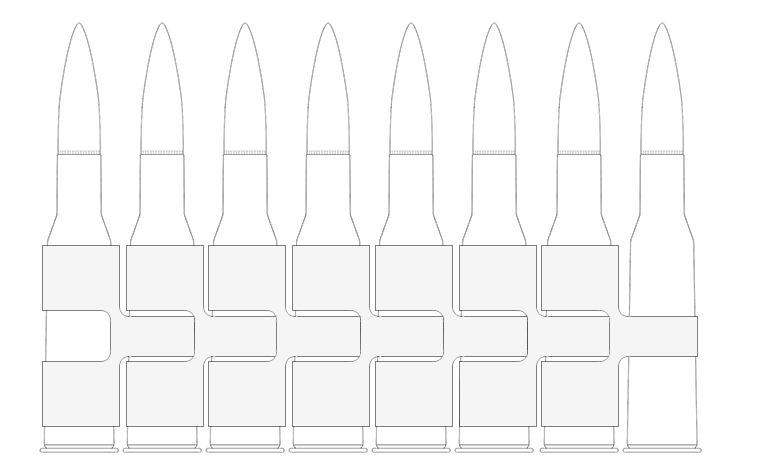
ShKAS Photographic Resources
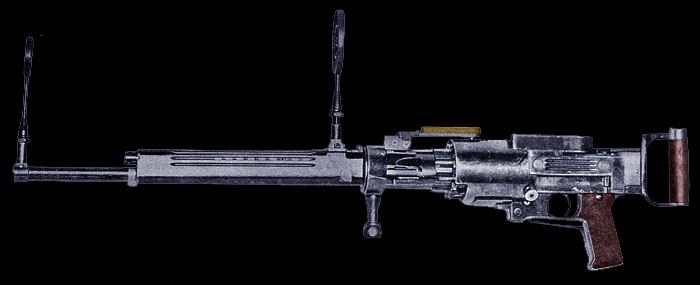
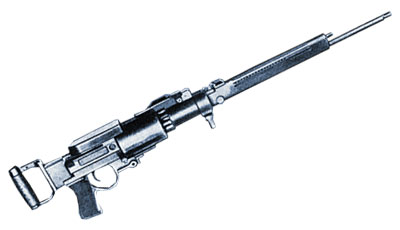
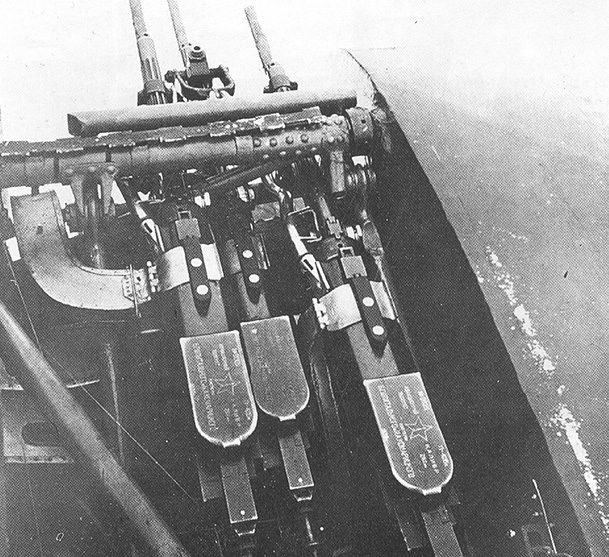
Experimental triple-installation on an I-16 fighter. This photo shows the feed chute and breech covers well.